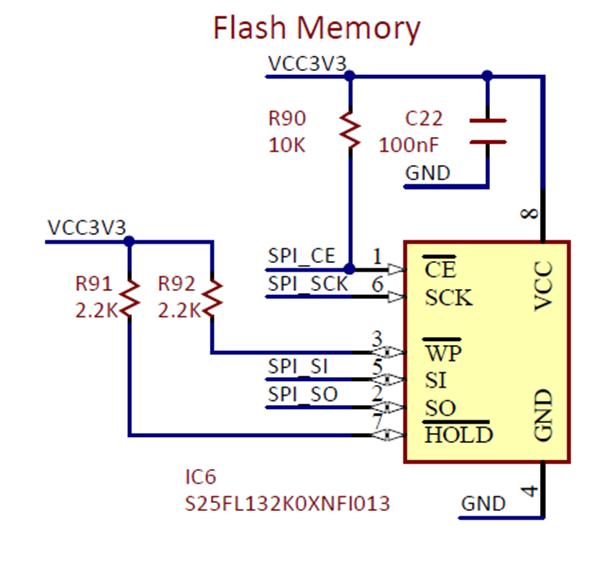Spi Serial Flash Programmer Schematic Diagram
Cypress's Serial Peripheral Interface (SPI) flash can be eas ily connected. SPI Serial Flash to. Connection Diagram Direct Programming SPI Flash. Bios Flash Memory SPI ATmega8A usb programmer Serial. FlashProg programmer schematic is. The project 'FlashProg: USB serial flash memory programmer'. Spi flash programmer schematic datasheet, cross reference, circuit and application notes in pdf format. PRESTO directly supports in-circuit programming using a dedicated ICSP connector and an. Serial EEPROMs (SPI, Microwire and I2C); serial data Flash; CPLD; and.
Designing with discrete flash is 1/10th the cost, uses a much smaller form factor, and requires significantly less specialized hardware than using SD flash cards. This Instructable will show you how to add 1MB of discrete external flash memory to your microcontroller project with what I believe to be the least amount of effort possible.

This is also a follow-on to my other two data-logging Instructables (an and a ) that explains how to download the data from the logger flash memory using age-old TTY command line applications found in Linux. Motivation Whenever I'm building an Atmel ATMega or Arduino project and I need to record data, I almost always reach for a single rather than an SD flash subsystem. Many reasons exist to choose a discrete flash chip over an SD subsystem, and vice versa, and you'll need to consider these tradeoffs for your design. The list below contains a few tradeoffs I think about when I need to decide if I want to use a single 8-pin DIP chip or a full-on SD solution: Hardware Complexity (Choose: Discrete) One way to add SD flash to an Arduino system is to use a shield, such as (three 'e's) I bought at my local Radio Shack for $15. While shields provide convenience for prototyping, the final production assembly might not have the budget or the space to include SD hardware. An 8-pin DIP package of a discrete flash chip is much easier to drop on a protoboard than an SD shield, assuming your development board even supports a shield. Software Complexity (Choose: Discrete) The SD flash subsystem commonly relies on.
While the devices are an SPI interface, it makes sense to use FAT since any PC/MAC can then read this card. These libraries are large and can take up precious EEPROM space on smaller embedded controllers. Via Vt6103 Sound Driver Free Download. Compatibility and integration into your build environment may require significant debug. The software required to drive a discrete flash chip with an SPI interface is trivial and very small, as you will soon see. Maybe this says more about me than the SDFat libraries, but I find them cumbersome to work with. Capacity & Portability (Choose: SD) SD flash wins big here, simply pop in a larger capacity SD card into the existing design with no modifications. Discrete SPI flash has lower density limits in the 8-pin DIP format.
The SDFat library means any PC/MAC can read the files on the card. Cost (Choose: Discrete) SD cards range in price dramatically, and with an SD flash shield, can set you back $20-$30. WinBond 1MB chips cost about $2 from Mouser or Digikey. Windows 2003 Server Keygen Crack Serial Generator. Drivers Epson Dfx 8500 Ribbon.